Eero 6 Review
A low-cost Wi-Fi 6 mesh system that integrates with Alexa
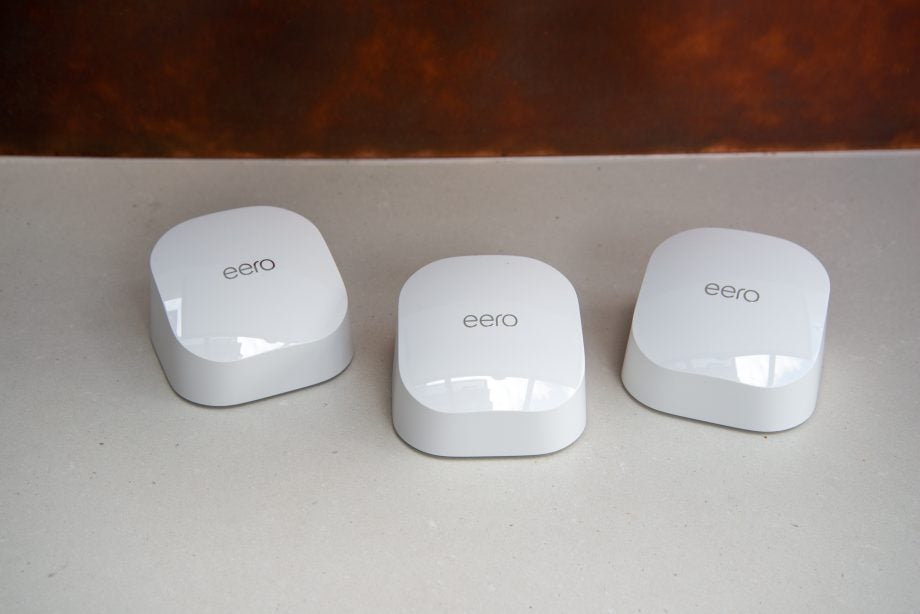

Verdict
Offering decent and stable speeds at a relatively low cost, the Eero 6 is a great budget mesh system that uses the latest Wi-Fi 6 technology. Integration with Alexa is neat, and the cheap subscription option delivers powerful security, filtering and ad-blocking. It’s quite a limited system when it comes to Ethernet ports, and there are faster mesh systems available, including an updated version of this very model.
Pros
- Decent speeds
- Integrates with Alexa
- Neat subscription offers
Cons
- Few Ethernet ports
- No Google Assistant support
Availability
- UKRRP: £279
Key Features
- Wi-FiA dual-band Wi-Fi 6 mesh system, using the mid-range AX1800 specification. It’s fast, but those who stream a lot and have more devices may need a more powerful system.
Introduction
Eero, an Amazon company, is known for its budget mesh systems. The Eero 6 is part of that category, although it’s a low-cost mesh system that uses the latest Wi-Fi 6 standard for better speeds and more features.
Among the growing crowd of low-cost Wi-Fi 6 options, the Eero 6 distinguishes itself with Alexa integration and some smart subscription options that add additional features. Good performance helps make this a winner, but the modest number of Ethernet ports is disappointing, and the newer Eero 6+ system could be a better buy.
Design and features
- Very easy to set up
- Some neat smart home features
- Few Ethernet ports
From a distance, the small (99 x 97 x 61mm) Eero 6 devices looks a bit like a key plucked from an oversized keyboard. I quite like it, and the small size means the units can at least be placed easily around your home.
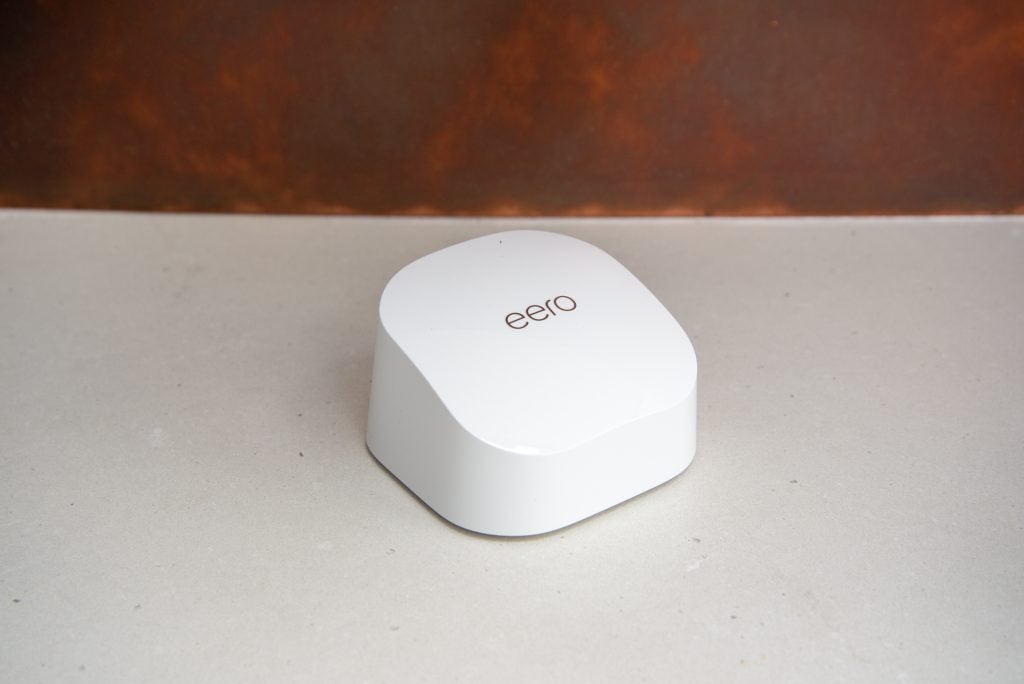
There are a range of options available, depending on the size of your home. A single router (£139) is good for up to 140 square metres, with one extender (£219) taking this up to 280 square metres, and a system with two extenders (£279) covering 460 square metres. Additional extender satellites can be bought for £99 each.
Although all of the devices look the same, there’s one major difference between the router and extender: Ethernet ports. With the router, you get two Gigabit Ethernet ports on the rear. One to connect to the internet and the other for wired devices. It’s likely that you’ll need to buy an Ethernet switch.
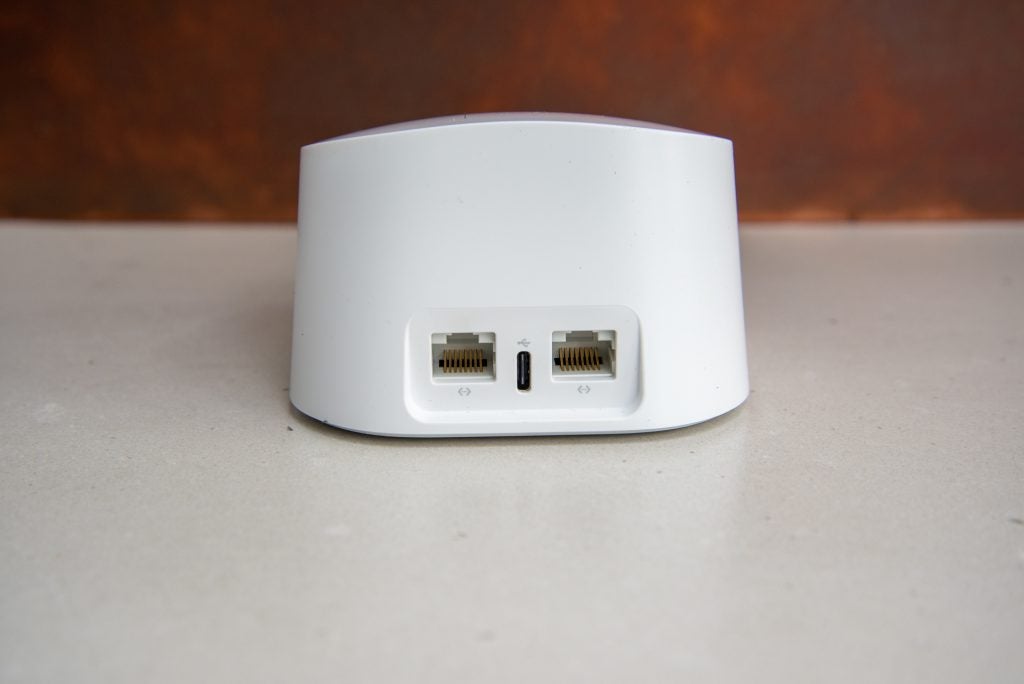
The extenders come with a USB-C power input and but no Ethernet ports. That’s quite restrictive: I’d expect to see at least one, either for wired devices or so that you can use Ethernet backhaul, where you connect satellites using cables. It’s something that has been fixed with the newer Eero 6+, and all satellites have two Ethernet ports.
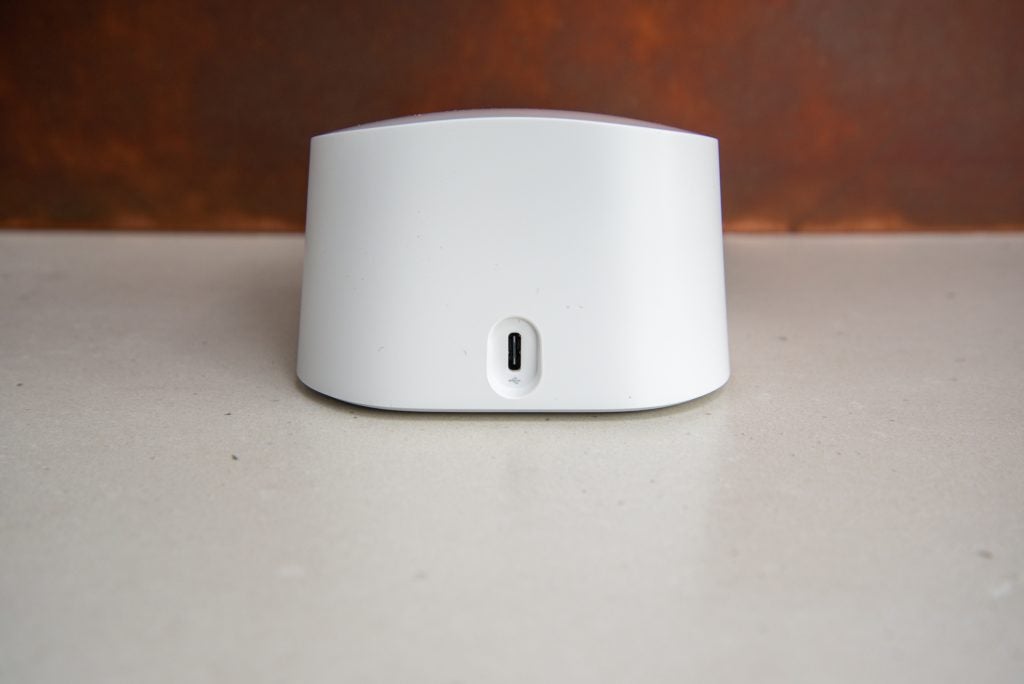
Configuration is simple using the Eero app, which you can sign into using your Amazon account – this links your mesh to your Alexa settings, too. You’ll then be taken through the quick wizard to install the system in your home, including setting up a secure wireless network.
Once connected, you can dive into the more advanced settings. HomeKit support is present (newer Eero devices no longer support this), letting you add your router into your Apple Home account. Once added, Eero can restrict smart devices from communicating with other Wi-Fi devices for security. You can then choose how to have your HomeKit devices communicate, even blocking internet access for some of them for security. Given the prevalence of smart home devices and the potential threat they pose, this is a powerful tool to keep your home safe. It’s worth reading a bit more about how Eero works with HomeKit.
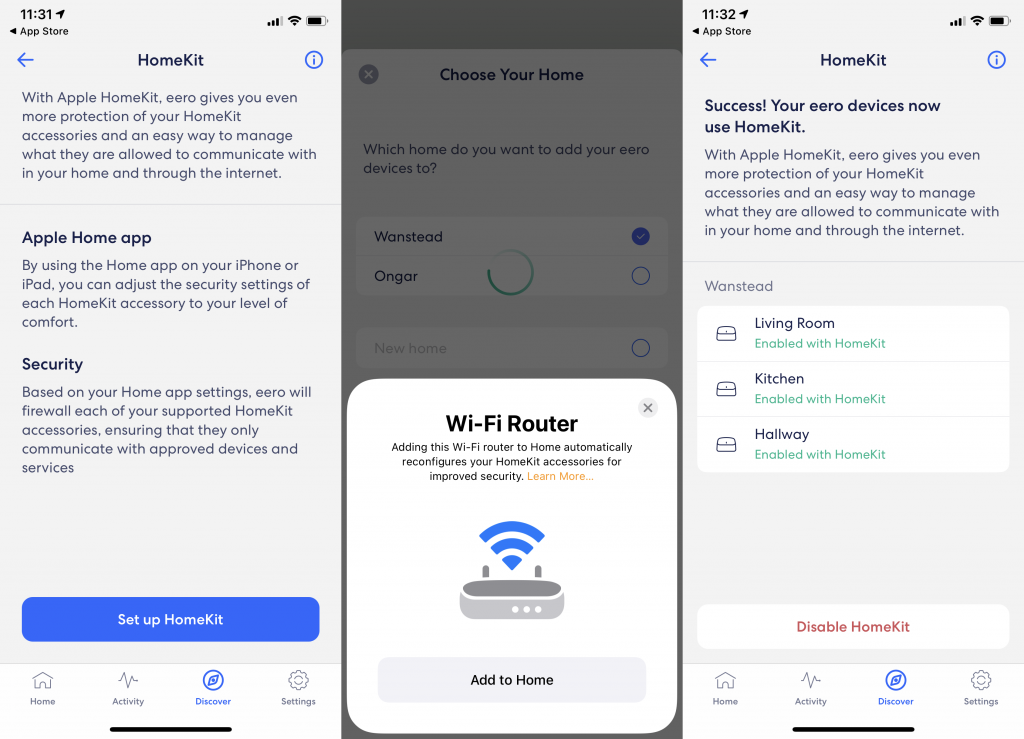
Toggle on Amazon Alexa support and you can voice-control your system. This opens up the Eero 6 as a Zigbee and Thread hub, too, enabling you to connect such devices as Hue lights to the system directly, without the need for an additional hub. It’s a feature that some Echo speakers come with, including the Echo Show 10 (3rd Generation). There’s no support for Google Assistant, however.
Voice control is a bit flaky in the UK: I couldn’t turn the guest network on or off with my voice, and I couldn’t pause individual devices. Currently, these features are only supported in the US, which is a shame.
For most people, it’s the extras that make the Eero system stand out. There’s the option of Eero Plus (£9.99 a month or £99.99 a year), which gets you additional security, blocking internet threats to devices on your network – but not outside of it, as you get with Netgear Armor on products such as the Orbi RBK852.
Network-wide ad-blocking and content filtering are two very useful tools. With the latter, you can set up profiles and assign devices for each person, selecting the level of internet filtering and even adding automatic downtimes. Filtering is easy to set up and powerful, particularly for dealing with children and their multiple devices.
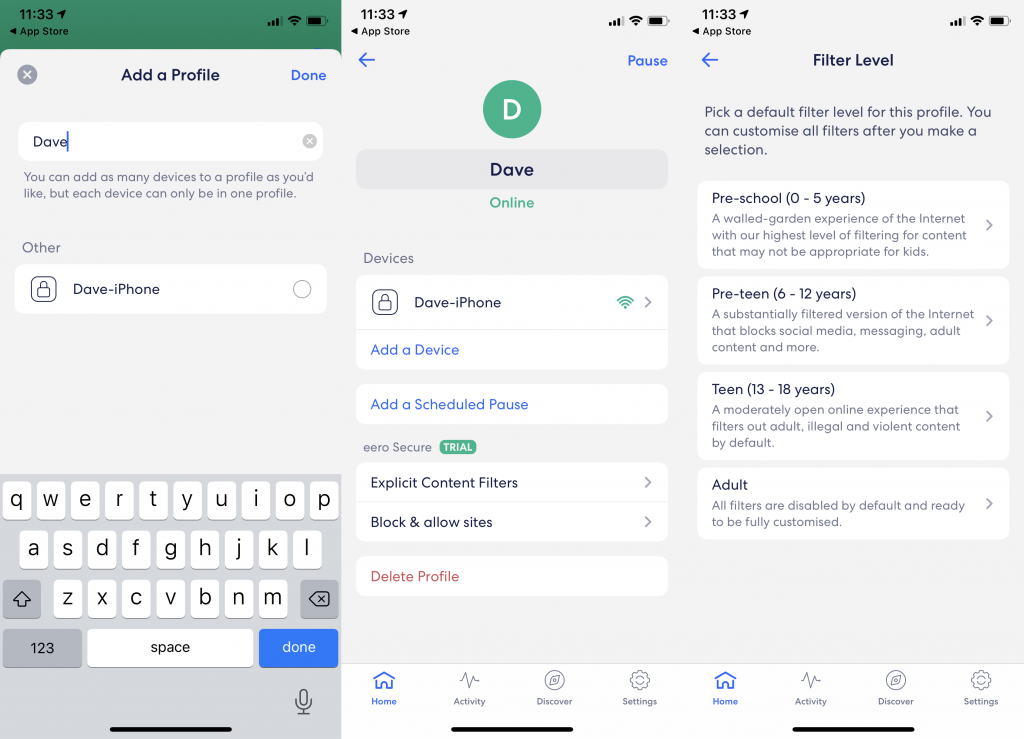
You also get subscriptions to 1Password (password manager), Encrypt.me (VPN) and Malwarebytes (security software). If you need these things, it’s a good price, but it’s a shame that the cheaper tier that only gave additional filtering and security tools has been removed.
New to Eero Plus is Eero Internet Backup. This lets you select a backup Wi-Fi network (one in close range, a mobile phone hotspot or wireless cellular hotspot, for example). If your internet goes down, Eero automatically connects to the backup network to continue your coverage.
As the new connection may not be as fast as your regular internet connection, there’s an option to restrict which devices can and can’t use the backup network. That can help with, say, a smart home camera, hogging bandwidth. If you need a rock-solid internet connection, then this feature is a neat add-on.
Since the Eero 6 is built to be simple to use, you don’t get much in the way of advanced features. For example, it isn’t possible to change the channel that the wireless networks use. This won’t be a problem for most people, but those wanting greater control will likely need to look at a different mesh system.
Performance
- Decent performance compared to the competition
- Very fast close up
- Not as quick at distance
The Eero 6 uses dual-band AX1800, which offers two-stream 2.4GHz networking (maximum of 574Mbps) and two-stream 5GHz networking (maximum of 1201Mbps). All bandwidth has to be shared between clients and for communication between satellites; spend more on an Orbi system and you get tri-band networking, with a dedicated network for communication between satellites.
Dual-band systems are usually slower than their tri-band counterparts, particularly at range, but the Eero 6 proved impressive for the price. Testing with a Wi-Fi 6 network, I saw communication speeds of 552.07Mbps at close range, which is better than the dual-band Orbi RBK352 and TP-Link Deco X20.
At 5m on the second floor, I saw the Eero 6 manage 302.36Mbps, and at 10m on the second floor, I saw speeds of 147.31Mbps (the only test where the dual-band Orbi did better). Performance was good in the kitchen, too, where I don’t normally get a signal – I managed throughputs of 164.58Mbps.
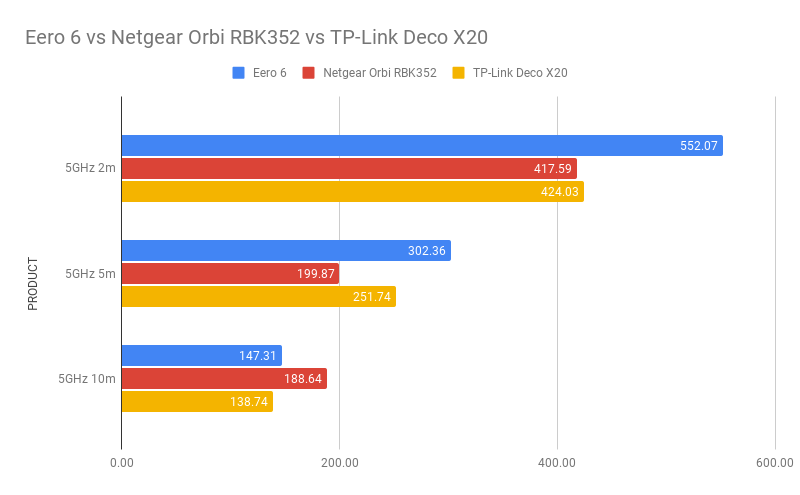
What’s good about these results are that they’re both comparatively quick and also stable, showing good network coverage.
Compared to the Eero 6+, and the newer model is ever-so-slightly faster, although there’s not much in it. Technically, the 6+ should be a lot faster as it supports wider 160MHz channels; however, I could never get these to work, as interference from neighbouring networks stopped the network down to standard 80MHz channels.
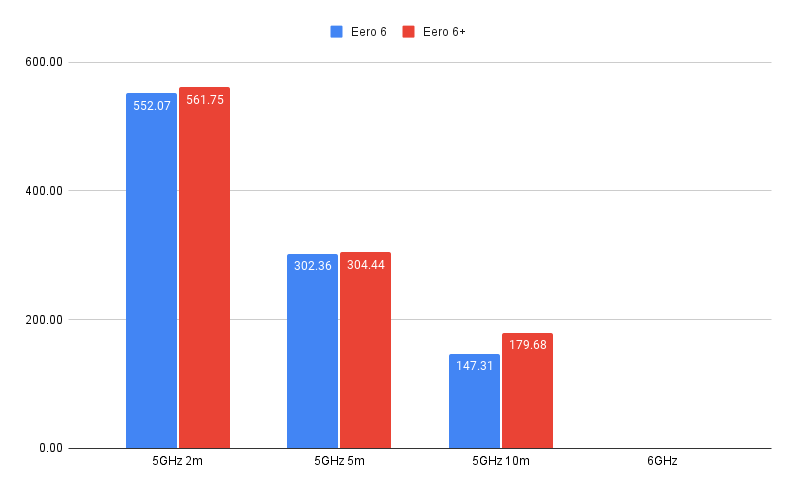
Final thoughts
Similar in speed to the Eero 6+ at a lower price, but with all of the same features, the Eero 6 may seem like a bit of a bargain. But the lack of Ethernet ports on satellite devices and the slightly lower performance means that the Eero 6+ is a better choice for most people.
If you do have existing Eero 6 devices, they’re compatible with all other Eero devices, so you can mix-and-match. Just be aware that adding an Eero 6 device to a newer network will disable 160MHz channels on the 5GHz band; in practice, this isn’t really an issue, as 160MHz channels rarely work in the congested UK. You can find other alternatives in the guide to the best wireless routers.
Best Offers
Should you buy it?
Simple to set up and configure, with decent (and stable) speeds, this is a great budget Wi-Fi 6 system that will suit most households.
If you need more speed or more wired device support, the Eero 6 isn’t the right product for you; there are mesh systems with more features.
Verdict
Offering decent and stable speeds at a relatively low cost, the Eero 6 is a great budget mesh system that uses the latest Wi-Fi 6 technology. However, the faster Eero Pro 6+ is only a little more expensive and all of its satellites have Ethernet ports, making it the better choice for most.
FAQs
The Eero 6 is the newer product and supports the new Wi-Fi 6 standard.


